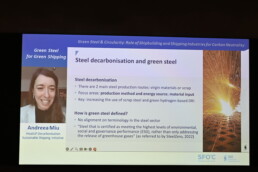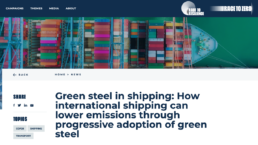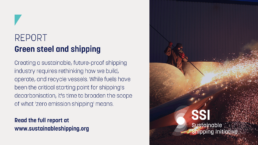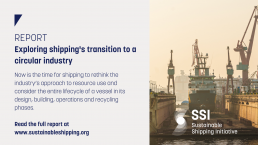Time period: 2021-Present
Members involved: A.P. Moller-Maersk, Lloyd’s Register, Priya Blue, RightShip, Wilhelmsen Ship Management, WWF
While there is a growing interest in sustainability across a ship’s lifecycle, it remains unclear how circular economy principles can be applied in concrete terms to shipping. Industry growth and ageing tonnage pose a challenge for the coming decades as shipowners and operators consider their vessel transition plans as part of their decarbonisation strategies. Compliance with regulation around recycling and waste management, the price of used steel and the incentives for reducing, reusing, refurbishing, and recycling of a ship’s components are a few examples of the economic, environmental and social factors at play.
Exploring shipping’s transition to a circular industry presents the findings of an inquiry commissioned by the Sustainable Shipping Initiative (SSI) and authored by circularity and sustainability consultancy 2BHonest. The report builds on previous research around the role of circularity in shipping, including SSI’s 2013 Closed Loop Materials Management work, the Circular Shipping Initiative, and other examples both within maritime and in comparable industries such as automotive and aviation.
Prepared based on academic knowledge, industry insights, and a range of stakeholder interviews, the Exploring shipping’s transition to a circular industry report published in 2021 looked at how circular economy principles can be applied to shipping, raising awareness and understanding among shipping stakeholders through evidence-based research, and setting out the opportunities and barriers across the vessel lifecycle for the transition to a circular shipping industry.
IIn 2022 a wider working group was established to carry out research on sustainable steel for shipping. Outputs from this research were shared through the Green steel and shipping report, published in June 2023.
- Explore the role of circular economy principles in shipping, further developing awareness and understanding of its potential for optimisation in the ship lifecycle, taking into consideration learning from similar experience in other sectors such as automotive
- Understand the process at end of life and rates of reuse, repurposing and recycling for a ship’s materials, taking used steel as a case study and considering associated infrastructure and facility requirements
- Consider the business case for circularity in shipping and the market opportunities it presents, taking into account the role that industry actors, including businesses, regulators and others can play in facilitating the transition to a circular maritime economy
- Understand how global and regional regulation related to waste, recycling and circular economy impact and incentivise a circular maritime industry
- Demystify the concept of sustainable steel and explore how it integrates in the shipping ecosystem as well as potential solutions for closing the loop









